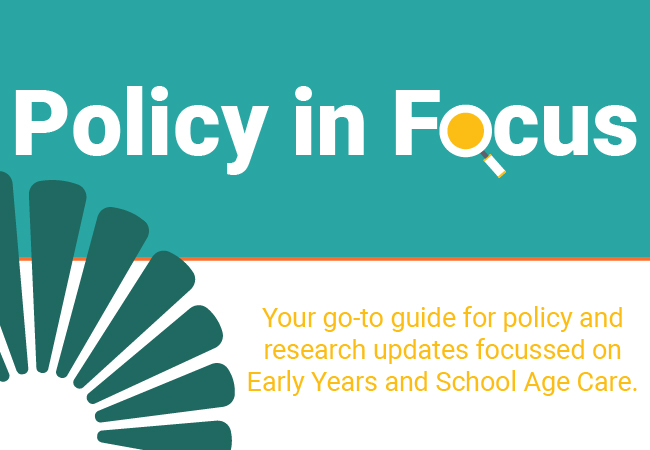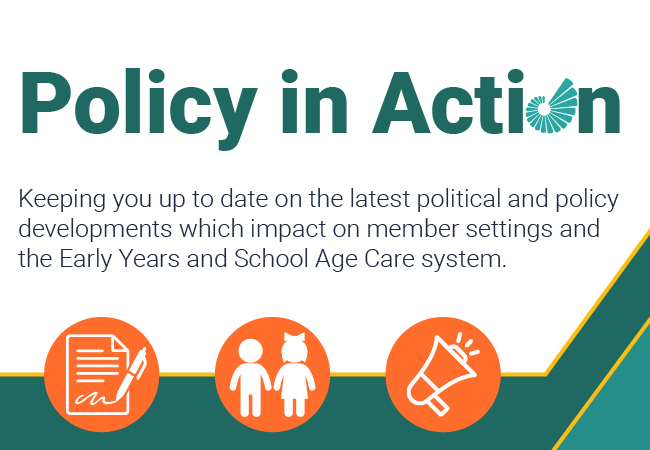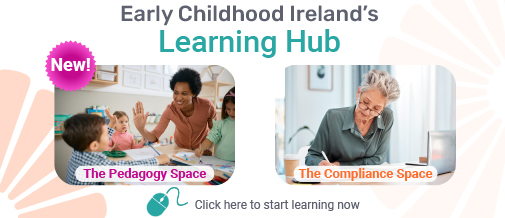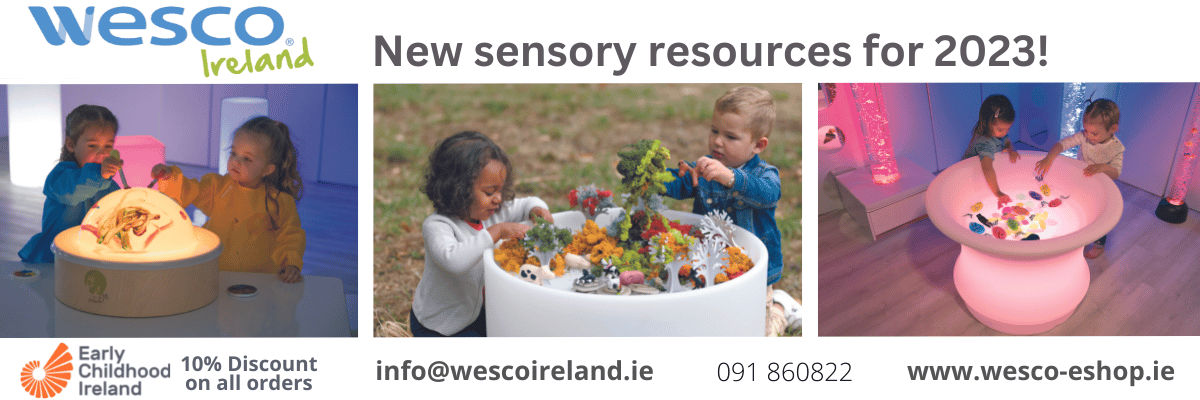Decluttering: the Universal Design way

In last week’s Scéalta blog post, Kathleen Tuite spoke about the benefits of decluttering our environments and how this can support children to feel involved and consulted with. In her post Kathleen referred to the Universal Design Guidelines for Early Learning and Care (2019). The concept of Universal Design includes the design and layout of environments as well as other ways in which we can recognise and support the diverse ways in which people learn. In this week’s Scéalta blog, we look at aspects of internal spaces from a Universal Design point of view. Next week we will look at the concept of Universal Design for Learning.
The Universal Design Guidelines for Early Learning and Care are divided into four sections. The two relevant sections (2 and 3) that we look at this week relate to Entering and Moving About and Key Internal and External Spaces. The guidelines state ‘Considering the range of users in a typical setting, it is essential that circulation areas are accessible, easily understood and usable. The overall layout of the building should be coherent, logical, easily navigated, and composed of distinct routes.’
Making an entrance
When thinking about where and how people enter your setting, consider aspects like access for people with buggies, wheelchair users or parents who may have car seats, nappy bags etc. Without making structural changes, are there ways access can be made easier? Does the space inside the door get cluttered with buggies, car seats, bags and other paraphernalia? Can you encourage people to store belongings elsewhere? Think about parking. Are the spaces near the door kept free for parents or others doing drop off or collections, encouraging staff to use the spaces furthest away?
If you have a ramp, is it kept clear of windblown debris, so it is easier to use for those who choose that route? Perhaps you can do some nice planting alongside the ramp or other access routes, to make it more welcoming and interesting for children as they pass that way on entering the building. Through thoughtful and considered planting, the entrance to the building will be more visible too. Adding nature to a concrete or otherwise barren space can really improve the appearance of a building. Think about spaces in your environment which could be codesigned with parents and children, perhaps lobbies or garden spaces.
The space for sensorial exploration
Gandini (2012) advises that encouraging physical conditions, using natural light and uncluttered spaces positively support and encourage children’s development. As noted by Gandini, young children’s development is enhanced and optimised through sensorial explorations and the opportunity for children to construct their knowledge and memory through them. An environment which utilises colour, light, sound and smell and provides a rich and varied selection of materials with multi-sensory surfaces and features based on the observed preferences of individual children and commensurate with their developmental levels, supports children’s right to expression through encouraging them to seek, receive and impart information and ideas in motivational contexts (Zini, 2005) (UD Guidelines Literature Review).
Neutral backgrounds

When looking at the internal spaces that children spend a lot of their time in remember that fewer visual displays can ensure a calmer environment/space for children. Not every wall in the setting needs to be covered in displays. Children’s drawings and ‘make and do’ stand out more when displayed against a neutral background, which is uncluttered. Uncluttered spaces give children room to engage in the environment. Shelving, cupboards, cabinets and other storage units to organise toys when tidy and well organised create a sense of calm and make toys and materials more accessible.

This is a good time of year to consider both internal and external spaces for children. Review the places where children work together, relax in, discover and places that children can be active. For pre-walkers, think about the placement of furniture which could encourage children to hold on while learning to walk. Babies love to crawl into small spaces and when cleverly designed will allow educators to observe and support babies’ enquiries. Are there spaces like this that can be created by perhaps removing a cupboard door and replacing with a curtain. Or by using a sturdy pop-up tent?
As stated in the Universal Design Guidelines, ‘An ELC setting should promote play, movement, adventure and challenge through the creation of flexible, interesting and diverse spaces. The environment should provoke and celebrate investigation, risk taking and critical thinking, while promoting engagement with the senses including sight, hearing, touch, smell, and taste.’
Simple changes can make a huge difference to how environments support children and adults of all ages and abilities to be comfortable, secure and curious.
References
Government of Ireland, Universal Design Guidelines for Early Learning and Care Settings: Literature Review
Gandini, L. (2012), ‘Connecting through caring and learning spaces’, In Edwards, C., Gandini, L. and Foreman, G., eds., The hundred languages of children, 3rd ed., Santa Barbara: Praeger, 317-341
Zini, M. (2005) ‘See, hear, touch, taste, smell and love’, Children in Europe, 8, 22-24









